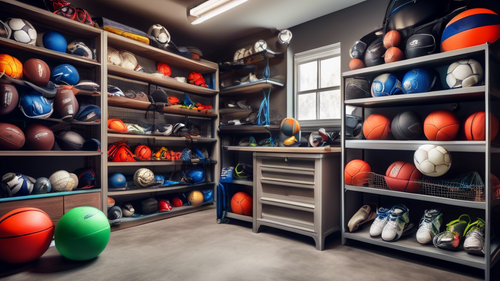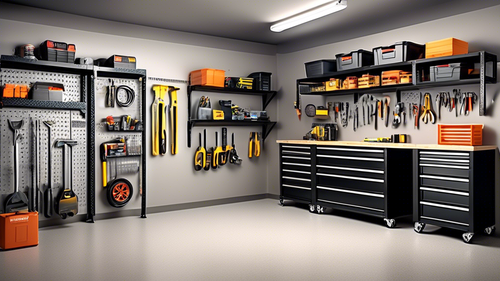
Revolutionizing Home Design for Modern Families
Share
Modern families are redefining the concept of home design, driven by the need for flexibility, functionality, and visual appeal in their living spaces. This shift is prompting a revolution in home design, where rooms are transformed into multifunctional hubs, and smart storage solutions maximize space efficiency. Zones within rooms are created to cater to diverse family needs, and convertible furniture enhances room functionality. As families continue to evolve, home design must adapt, incorporating technology integration, flexible layouts, and outdoor extensions. Discover how innovative design elements can harmoniously support the complexities of modern family life.
Key Takeaways
• Modern families require multifunctional spaces that cater to diverse needs, prioritizing flexibility and smart storage solutions for space efficiency.
• Flexible layouts and convertible furniture enable rooms to adapt to different purposes, increasing functionality and value.
• Zoning solutions, such as dividers and different floor surfaces, create visual and physical separation within open-plan living areas.
• Integrating technology with smart home features enhances room functionality, allowing families to stay connected and organized.
• Harmonious environments that balance functionality and visual appeal are essential for supporting diverse family needs and promoting a sense of well-being.
Reimagining Room Functionality
Increasingly, modern families are recognizing the importance of rethinking traditional room layouts to better support the diverse needs of their members, leading to a surge in demand for multifunctional spaces that adapt to different activities and lifestyles.
Flexible layouts that incorporate smart storage solutions are becoming essential, allowing families to maximize space efficiency while minimizing clutter. Zoning solutions, such as movable dividers or different floor surfaces, help create visual and physical separation within rooms, catering to diverse needs.
Convertible furniture, like Murphy beds, further enhances room functionality, enabling smooth shifts between activities. By embracing these design elements, modern families can craft spaces that not only accommodate but also elevate their unique lifestyles.
Evolving Living Space Needs
As families navigate the complexities of modern life, their living spaces are evolving to accommodate a new era of flexibility, with open floor plans giving way to flex rooms and adaptive spaces that prioritize supervision and interaction.
| Design Trend | Description |
|---|---|
| Flex Rooms | Adaptive spaces for diverse family needs |
| Outdoor Enhancements | Awnings, patio heaters, and outdoor play equipment |
| Multi-Functional Spaces | Designing rooms with multiple designated areas |
| Storage Solutions | Proper storage solutions for organized living |
| Visual Separation | Using different floor surfaces or movable dividers |
With the rise of remote work and learning, families require flexibility solutions that cater to their unique needs. By incorporating outdoor enhancements and multi-functional spaces, modern families can create a harmonious balance between work, school, and leisure activities. Proper storage solutions and visual separation within rooms further enhance the functionality of these evolving living spaces.
Designing for Modern Family Life
Modern families are redefining their living spaces by incorporating clever design elements that prioritize functionality, flexibility, and visual appeal. Ultimately, this creates harmonious environments that support their diverse needs.
By incorporating flexible furniture, such as sectional sofas and convertible Murphy beds, families can adapt their spaces to accommodate multiple activities.
Technology integration is also key, with designers incorporating smart home features and dedicated areas for screen time activities to minimize distractions.
This thoughtful approach to design enables families to create zones within rooms that cater to different needs, from sleep and play to study and leisure.
The result is a living space that is both beautiful and functional, supporting the ever-changing needs of modern families.
Adaptable Spaces for the Future
Flexible floor plans and multi-functional spaces are redefining the concept of home, allowing families to future-proof their living areas and stay adaptable in the face of evolving needs and lifestyles. This shift towards adaptability enables families to efficiently utilize their space, accommodating changing requirements with ease.
Here are four key considerations for designing adaptable spaces:
-
Flexible layouts: Incorporate movable walls, modular furniture, and convertible spaces to cater to diverse needs.
-
Outdoor extensions: Utilize awnings, patio heaters, and outdoor furnishings to extend living areas into the outdoors.
-
Multi-functional zones: Designate areas for different activities, such as work, study, and leisure, to maximize space efficiency.
- Technology integration: Incorporate smart home features and innovative storage solutions to enhance functionality and comfort.
Frequently Asked Questions
How Can I Ensure My Home Design Is Sustainable and Eco-Friendly?
To guarantee a sustainable and eco-friendly home design, incorporate eco-friendly materials, sustainable systems, and energy-efficient solutions, while prioritizing natural light, ventilation, and air quality, ultimately creating a harmonious and environmentally responsible living space.
Are There Any Smart Home Technologies That Can Enhance Family Life?
Smart home technologies can greatly enhance family life by streamlining daily routines with voice assistants and automated routines, allowing for seamless control over lighting, temperature, and entertainment, and fostering a more efficient, relaxed, and connected living experience.
Can I Incorporate Nature-Inspired Elements Into My Home Design?
Coincidentally, nature-inspired elements can harmonize with modern functionality, incorporating organic textures and biophilic patterns that bring the outdoors in, fostering a sense of serenity and connection to the natural world within your home.
How Do I Balance Aesthetics With Functionality in My Home Design?
To balance aesthetics with functionality, prioritize space planning and establish a design hierarchy, allocating areas for specific activities while visually harmonizing elements to create a cohesive, functional, and beautiful space that exudes power and sophistication.
Are There Any Universal Design Principles That Cater to Multigenerational Families?
Universal design principles for multigenerational families prioritize accessible layouts and flexible spaces, incorporating adaptable zones for diverse needs, ensuring smooth shifts between areas, and fostering a harmonious, functional living environment.
Conclusion
As the fabric of modern family life continues to unravel and reweave, home design must adapt to accommodate the intricate tapestry of needs and desires.
The boundaries between living, working, and playing blur, and the modern home transforms into a dynamic, multifaceted space.
Like a chameleon, it sheds its traditional skin, revealing a vibrant, adaptable landscape that harmoniously integrates functionality, comfort, and well-being.
As the threads of this new narrative intertwine, the modern home emerges as a vibrant, ever-evolving sanctuary, where life's diverse rhythms converge in perfect harmony.
Related Posts
-

Sports Equipment Organization for the Garage
Sports Equipment Organization for the Garage: A Comprehensive Guide As an avid sports enthusiast, I know firsthand...
-

Optimal Garage Storage Depth
Tired of your garage resembling a disorganized mess, with items precariously piled up everywhere, just waiting to...
-

Effortless Kitchen Gadget Storage Solutions
You're about to convert your kitchen into a haven of organization and efficiency with effortless gadget storage solut...


